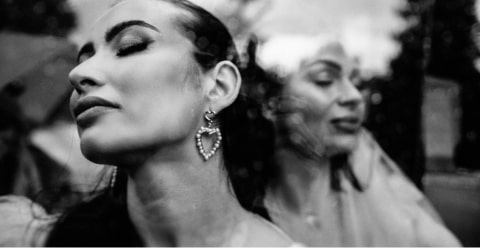Cover image by freepik
The advent of Artificial Intelligence (AI) in photography has ushered in a transformative era for photo creation and editing. This technological integration offers unprecedented capabilities, allowing photographers to venture into previously uncharted creative territories. However, with these newfound possibilities come intricate challenges. The ethical dimensions of AI in photography are vast and multifaceted, encompassing concerns that range from the authenticity of the photos produced to broader issues of representation, privacy, and consent.
Navigating this complex landscape requires an understanding of the broader implications of their choices. It’s a journey of discovering how to harness the power of AI responsibly, ensuring that the photos produced are not only visually captivating but also ethically sound.
In this article, we talked to Soraiya Merali from Linx Productions to explore the roots of these concerns, exploring the balance between the innovative potential of AI and the moral responsibilities of those wielding it.
1. Artistic Integrity and Transparency in AI Enhancements
The boundary between genuine artistry and AI-driven manipulation is becoming increasingly indistinct. With tools like Photoshop now offering features to extend or add elements to a photo, photographers have a world of possibilities at their fingertips. However, with these capabilities come questions about the source of these additions and the authenticity of the final photo.
Transparency in the use of AI is paramount. Brands and influencers, in particular, have a responsibility to their audiences. For instance, Soraiya cited the backlash Victoria’s Secret faced for not being transparent about their photo edits. “If you’re selling a product, you can’t just use AI and say ‘Here’s the after picture’. That’s a misrepresentation.” She emphasized, “Declaring AI enhancements were used could make a significant difference in public perception.”
» Want to learn more about using AI in photography? Find out how embracing AI in photography is done
2. Avoiding Bias and Upholding Inclusion
One of the most significant is the potential for AI tools to perpetuate and even amplify societal biases. The underlying algorithms that drive AI tools are often developed based on existing data sets, which might be influenced by societal norms and prejudices. This can result in outputs that are not truly representative of diverse populations.
“If someone writes a code defining beauty as a beautiful black or South Asian woman, that’s the photo you’d get when asking AI to generate photos of the world’s most beautiful women,” says Soraiya. Such biases, while unintentional, can have far-reaching implications, reinforcing stereotypes and limiting representation.
Photographers must be well-informed and critically assess AI tools and, where possible, opt for those that have been designed with accessibility and inclusion in photography editing as a key consideration. Additionally, photographers can play a role in pushing for more inclusive AI development by providing feedback to software developers and advocating for tools that reflect the rich tapestry of human diversity. In a world increasingly shaped by AI, ensuring that these tools celebrate, rather than diminish, our collective diversity is paramount.
3. Protecting Privacy and Consent
The potential for AI to breach privacy is a significant concern. Facial recognition, for instance, can create databases of individuals without their knowledge or consent. Beyond the obvious privacy concerns, there’s also the potential for misuse. AI tools can be used to create misleading or harmful photos, such as photoshopping someone in an inappropriate setting.
Moreover, AI’s ability to analyze and interpret facial expressions can reveal a wealth of personal information. A series of photos can provide insights into an individual’s emotions and state of mind, information that many would consider private. The need for explicit consent, especially when using such powerful tools, cannot be overstated.
4. Crediting in the Age of AI
In the realm of traditional photography, the process of giving credit is well-established and relatively simple. However, the introduction of AI into the mix introduces a new set of challenges. AI-driven tools, by their very nature, can pull from a vast array of online resources, sometimes integrating multiple elements into a single photo.
There is a pressing need for comprehensive industry guidelines that address these complexities. Until clear guidelines are in place, photographers need to be cautious and understand where their AI tools source content. This leads to a pressing question, which Soraiya raises about the current state of crediting in AI photography, “How do you really credit something or someone if you don’t know what or who the source is?”
From Tools to Truths: The Deeper Layers of AI Photography
The ethical considerations introduced by AI tools are multifaceted, ranging from concerns about authenticity to issues of representation and privacy. Moreover, as the field of photography evolves in tandem with AI advancements, there’s a pressing need for industry guidelines and best practices that address these ethical concerns. Photographers must prioritize continuous learning, staying updated on the latest developments, and understanding their broader implications.
Navigating this intricate landscape requires more than just technical proficiency. It demands a deep understanding of the ethical implications of each tool and technique. As Soraiya aptly put it, “Follow your gut. If it feels wrong, it probably is.” This sentiment underscores the importance of intuition and moral judgment in the age of AI. Yet, with these challenges also comes the opportunity for photographers to pioneer new standards, pushing the boundaries of creativity while upholding the highest ethical standards, ensuring a brighter and more inclusive future for the world of photography.
____

